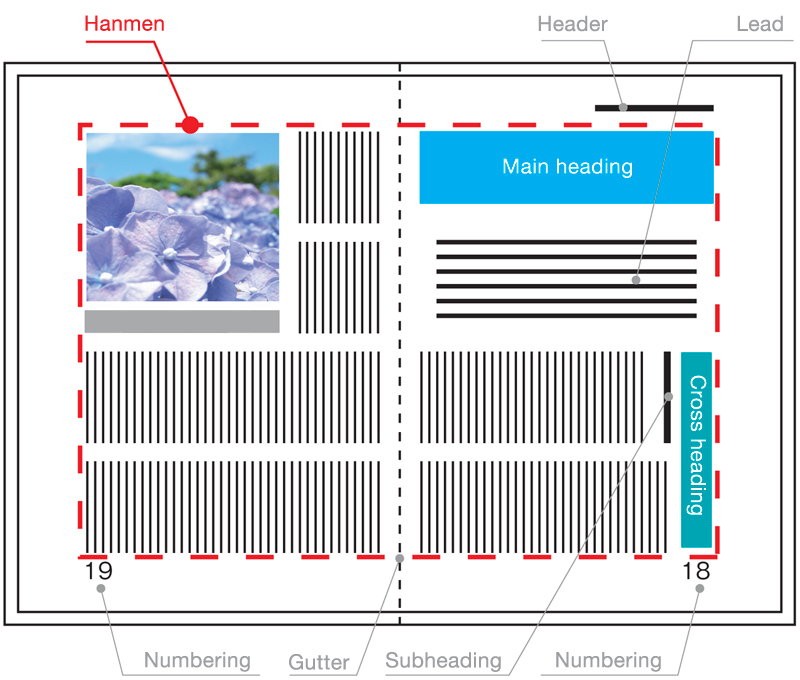Hanmen
版面
Hanmen
CATEGORIES
Hanmen or hanzura (type page) originally referred to the entire printed area. It now primarily refers to the type area or printed region that makes up the contents of pages in books and magazines. In the latter case, secondary elements such as headers, footers, and page numbers are placed in the margins around the hanmen.
The size of the hanmen, when the contents are predominantly text, is determined by the size of the font, the number of characters per line, the kerning, the number of lines per page, and the space between the lines. With word processing software and DTP software, by contrast, the hanmen size is generally set first, based on the desired margin sizes, and then things like the number of characters and lines is determined automatically. The design of the hanmen is extremely important in the creation of beautiful and easy-to-read printed matter; for this reason, there are many different schools of thought about how an appropriate hanmen should be determined. In particular, when it comes to books in European languages, a number of theories have accumulated over history, beginning with that of William Morris. In general, with books, when the lower margin is wide, it creates a sense of stability. Also, when opened the central gutter margins (along the binding) will be perceived in conjunction, which means that it is best to shift the hanmen toward the upper and gutter margins. There is no definitive norm, however, as considerations of design, use, and quality play important roles in the decision of where to place it.

